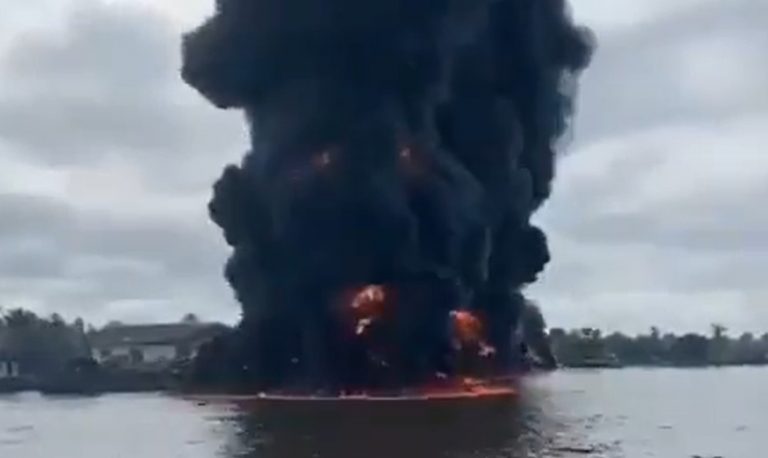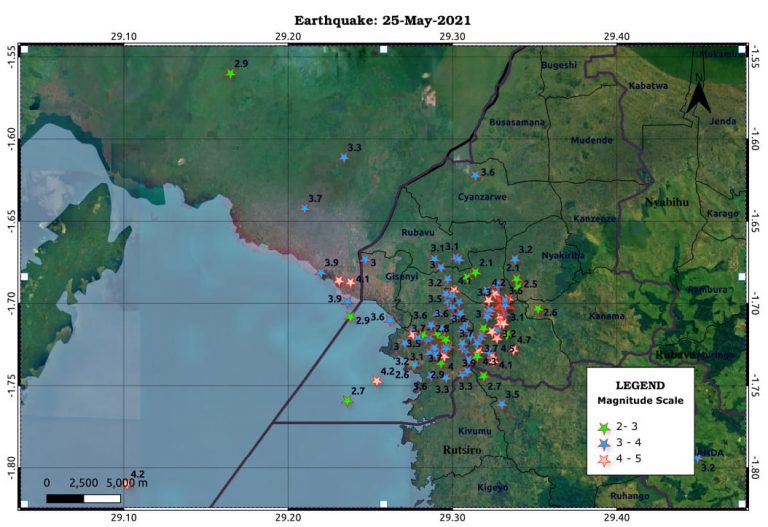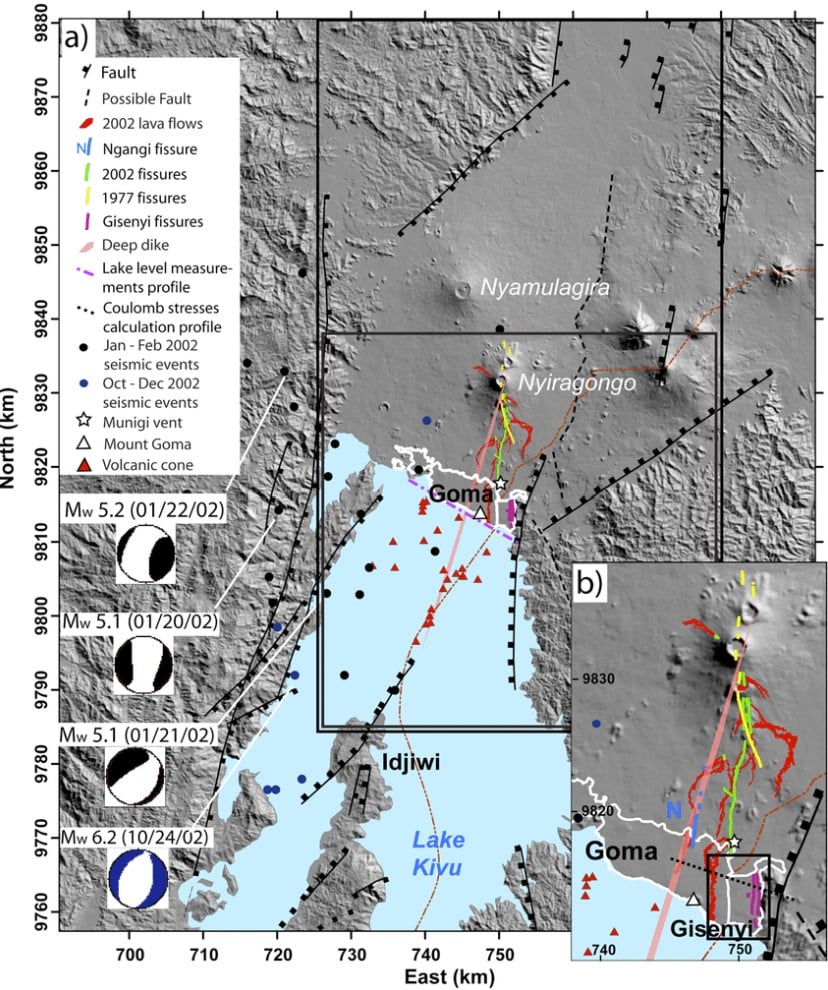


Posted on 05/26/2021 6:19:30 PM PDT by Roman_War_Criminal
Lake Kivu contains about 300 billion m3 of carbon dioxide and 60 billion m3 of methane gas, giving it the capacity to produce between 120 million and 250 million m3 of methane gas annually. Now, you probably understand why panic and fear has gripped communities in Rwanda and Congo after the sudden and deadly eruption of Nyiragongo volcano on Saturday, which is situated just 20-25 miles away…
The likelihood of flow of extremely hot magma into the waters of Lake Kivu and the resulting seismic unrest are feared to potentially cause a deadly explosion.
Rwanda’s Lake Kivu is indeed one of the world’s three “exploding lakes” and is at serious risk of “overturn.”
As shown in the map below, the Nyiragongo volcano is just 20 miles away from Goma and lake Kivu.
An overturn occurs when the gases at the bottom of a lake are disturbed and rise to the surface, creating a deadly fog that kills.
In more simpler terms an overturn is a process whereby huge amounts of carbon dioxide are released from under its surface, suffocating everyone in the surrounding areas.
Some recent footages, captured just 2 days after the eruption and the following earthquake, show Lake Kivu on fire.
So did the latest major geological events in the region launched the overturn in Lake Kivu?
Other exploding lakes have already erupted deadly
In Cameroon two lakes with characteristics to Rwanda’s Lake Kivu have previously exploded, causing a widespread disaster. The first recorded limnic eruption occurred at Lake Monoun in 1984, causing asphyxiation and death of 37 people.
In 1986, Lake Nyos released a cloud of Carbon dioxide into the atmosphere, killing 1,800 people and 3,500 livestock in nearby towns and villages.
Since then, engineers have been artificially removing the gas from the lake through piping.
What about Lake Kivu explosion risk In comparison, Lake Kivu is 2,000 times larger and thus presents a disaster threat of monstrous proportions.
Lake Kivu has about 300 billion m3 of carbon dioxide and 60 billion m3 of methane gas, giving it the capacity to produce between 120 million and 250 million m3 of methane gas annually.
Some scientists say that the ever-expanding volumes of carbon dioxide and methane in Lake Kivu, coupled with the nearby volcanic activity, make a limnic eruption highly likely at some stage in the future unless degassing occurs. Rwanda has thus embarked on the extraction of some of the 60bn cubic metres of methane in the water.
The shores of Lake Kivu are much more densely populated and with such a natural disaster, millions of lives could be lost.
and maintains a gas extraction, processing and compression plant to sell methane domestically and abroad.



A much ‘watered down’ version of this used to happen in Lake Erie, Ohio. In 1969, industrial pollution so fouled the lake, that it ‘caught fire’ at least 13 times, most famously on June 22, 1969. These events helped to spur the American environmental movement and creation of the meddlesome EPA.
Nor’easters look better and better by the day.







That lake has a HUGE reservoir of deadly gas at the bottom.
If every internal combustion engine vehicle in Africa was magically switched with an EV, that wouldn’t offset the CO2 this lake emits. Suck on a tailpipe, Algore...
This human is not staying in the facility of an active volcano OR a lake made out of gasoline, let alone BOTH. My daddy tried to get it thru my thick skull to learn from the mistakes of other humans as there simply isn’t enough time to do all the stupid crap yourself.
Is that like, different from really really hot magma?
I thought the French had built a facility that was slowly venting off the gas at the bottom.
LOL!
It’s like talking to an Arabian about the recent heatwave in Ohio.
Sorry I am late but is was out of town.
Regs to that lake. It is supposed to have the largest collection of CO2 and Methane in Africa at the bottom. They claimed that if that volcano ever managed to get lava into that lake they feared it would overturn...like a couple of smaller lakes that did that and resulted in a huge die off around the lakes. It took them some time to figure out what the heck happened to those populations around those lakes until some medical experts looked at the bodies and all that.
But you are right, they are siphoning gas off the lake commercially, but it isnt but a small amount to the amount on the bottom. .
Disclaimer: Opinions posted on Free Republic are those of the individual posters and do not necessarily represent the opinion of Free Republic or its management. All materials posted herein are protected by copyright law and the exemption for fair use of copyrighted works.